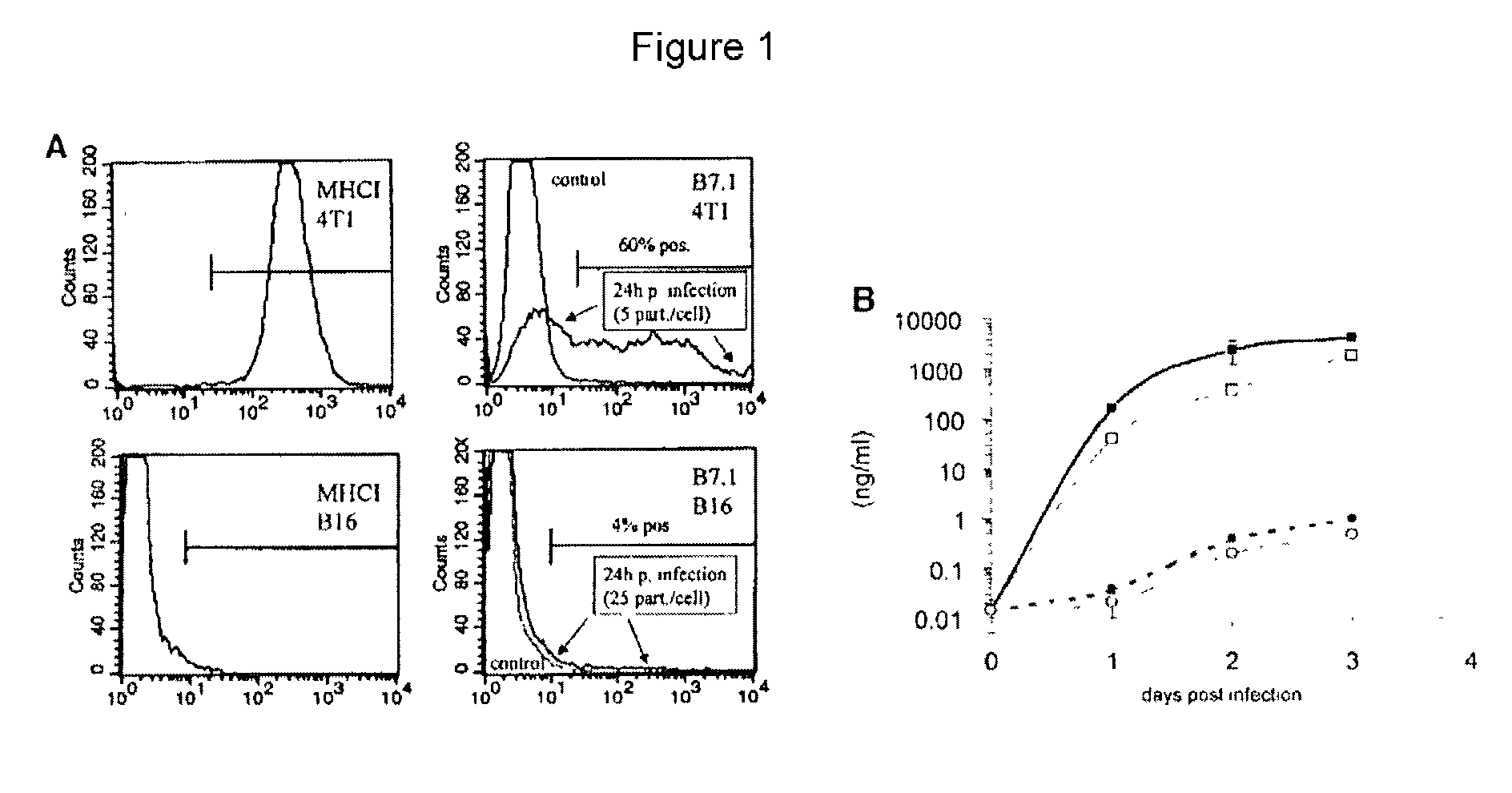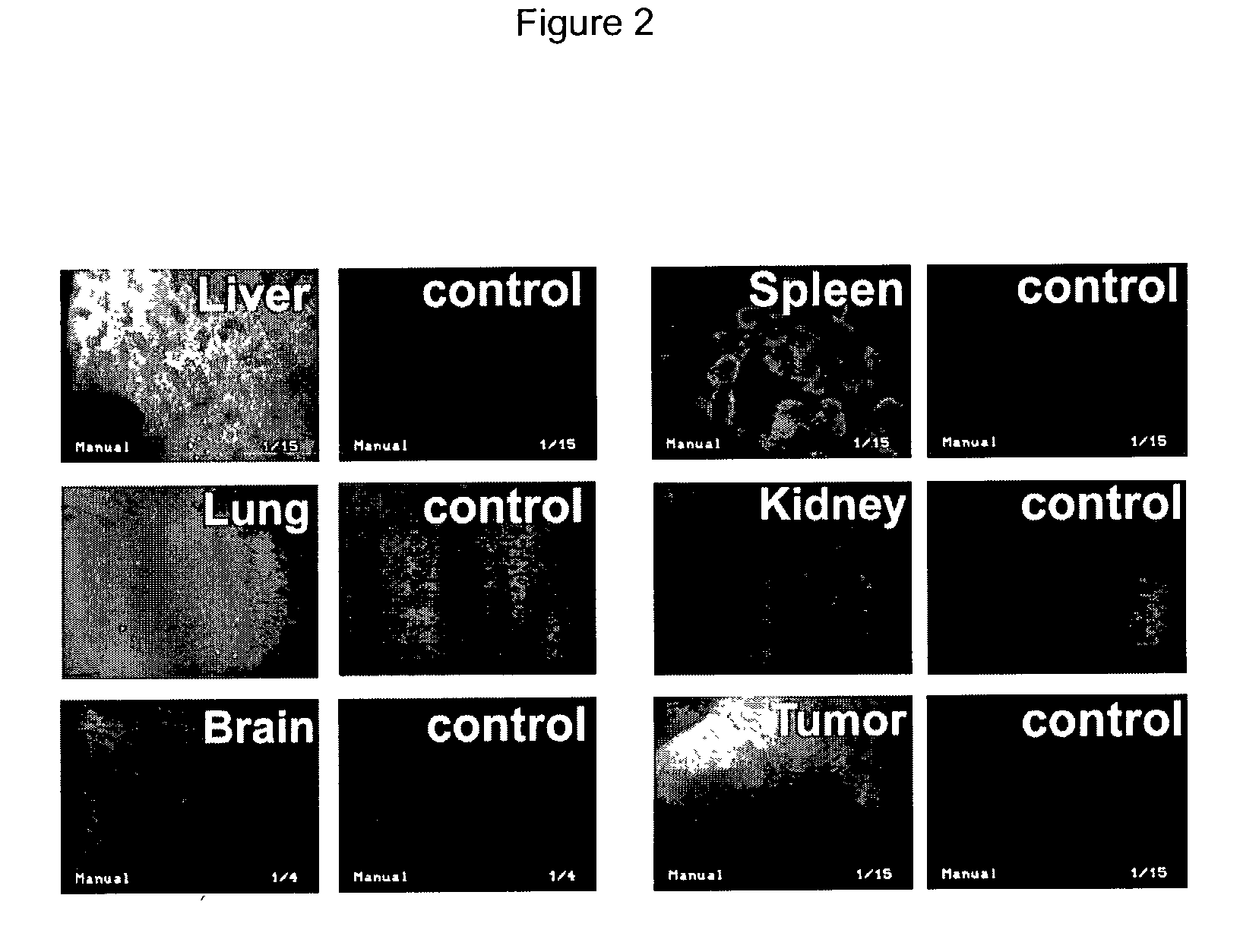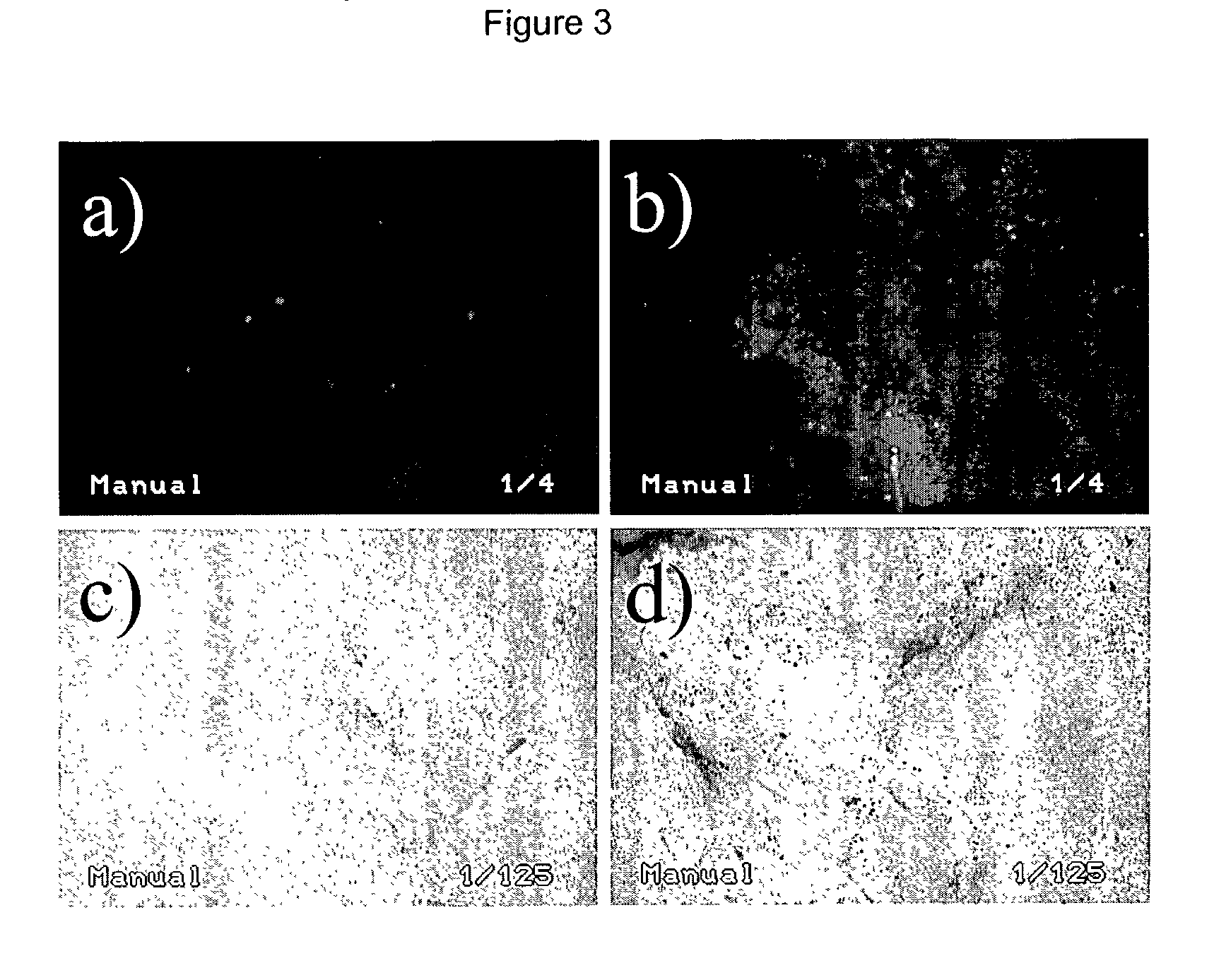Method for selective expression of therapeutic genes by hyperthermia
a gene therapy and hyperthermia technology, applied in the field of promoting antitumor activity in mammals, can solve the problems of lack of temporal, limited use of gene therapy methods, and prohibitive us
- Summary
- Abstract
- Description
- Claims
- Application Information
AI Technical Summary
Benefits of technology
Problems solved by technology
Method used
Image
Examples
example 1
In vitro Expression of Adenoviral Gene Therapy Constructs
[0294] Eighty percent confluent 4T1 cells were infected with AdIL12 / B7.1 at a MOI of 5 / cell for 5 hours. Twenty-four hours after the beginning of infection, cells were detached with 0.05% trypsin (Gibco / Life Technologies of Rockville, Md.) and resuspended in PBS with 3% normal rat serum. Cells were incubated with monoclonal biotin-labeled anti-mouse B7.1 antibody (Caltag of Burlingame, Calif.) for 30 minutes, washed in PBS, and incubated in streptavidin-phycoerythrin (Pharmingen of San Diego, Calif.) for 30 minutes. Incubations and washes were performed at 4.degree. C. Samples were measured on a FACStar flow cytometer (Becton-Dickinson of Franklin Lakes, N.J.).
[0295] FIG. 1A presents levels of expression of the reporter gene GFP in cell cultures infected with an adenovirus encoding GFP. Levels of GFP were measured using FACS analysis. FIG. 1B presents levels of expression of IL12 in cell cultures infected with an adenoviral co...
example 2
In vivo Expression and Systemic Dissemination of Reporter Gene Adenovirus
[0296] 3.times.10.sup.8 pfu (plaque forming unit) of AdGFP in 50 .mu.l PBS were intratumorally injected when subcutaneous B16.F10 melanoma tumors reached a diameter of 5-7 mm. The mice were sacrificed 24 hours later. Fluorescence microscopy of harvested tumors and organs (FIG. 2) demonstrated high numbers of GFP expressing cells in the liver and spleen and to a lesser extent in the lung of C57BL / 6 mice bearing B16 melanoma at 24 hours after virus injection. The GFP-expressing area in the tumor was limited to a small volume around the presumed needle track. GFP expression in the liver was almost homogeneous and infected areas were seen throughout the whole spleen. No relevant GFP expression was detected in kidneys or brain of AdGFP injected animals or in any organs of the control animals.
example 3
Intratumoral Expression of Plasmid Gene Therapy Vectors
[0297] B16.F10 tumors grown to 5-7 mm in diameter (or 65-179 mm.sup.3) in volume were injected with EGFP or .beta.-gal reporter plasmids and electroporated to promote cell transduction. Expression of reporter genes (EGFP and .beta.-gal) after plasmid injection and electroporation in tumor tissue was assessed in fresh tissue sections (at 250 .mu.m) by fluorescence microscopy and transmission light microscopy (FIG. 3). For both reporter systems, few cells were positive when only naked DNA without consecutive electroporation was injected. The combination with electroporation resulted in consistently efficient transduction of a higher number of cells with both reporter genes. In EGFP experiments, plasmid injection with electroporation allowed 3-8% (as evaluated by fluorescence-activated flow cytometry) of all the cells in the tumor mass to be transduced with the EGFP gene in comparison to <0.1% in tumors injected with EGFP plasmid a...
PUM
| Property | Measurement | Unit |
|---|---|---|
| temperature | aaaaa | aaaaa |
| temperature | aaaaa | aaaaa |
| temperature | aaaaa | aaaaa |
Abstract
Description
Claims
Application Information
 Login to View More
Login to View More - R&D
- Intellectual Property
- Life Sciences
- Materials
- Tech Scout
- Unparalleled Data Quality
- Higher Quality Content
- 60% Fewer Hallucinations
Browse by: Latest US Patents, China's latest patents, Technical Efficacy Thesaurus, Application Domain, Technology Topic, Popular Technical Reports.
© 2025 PatSnap. All rights reserved.Legal|Privacy policy|Modern Slavery Act Transparency Statement|Sitemap|About US| Contact US: help@patsnap.com



